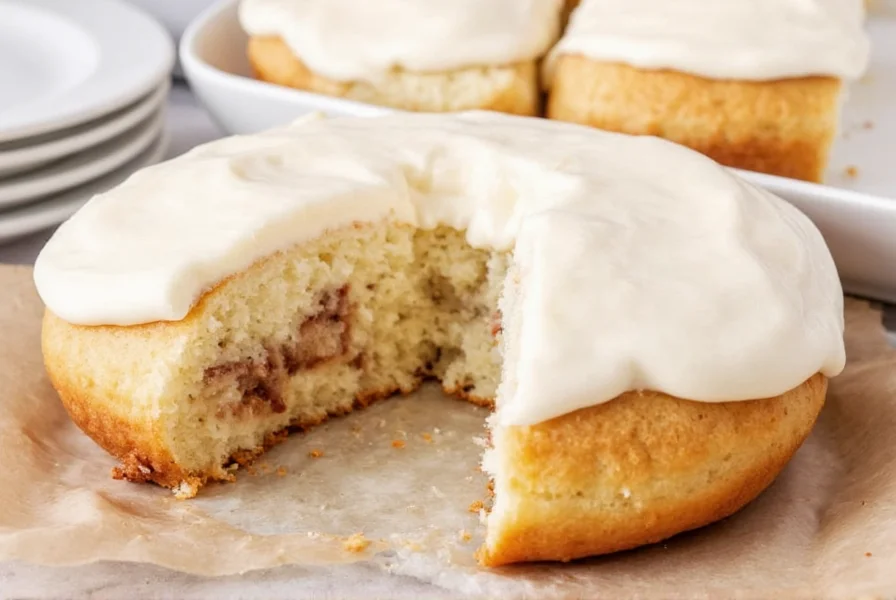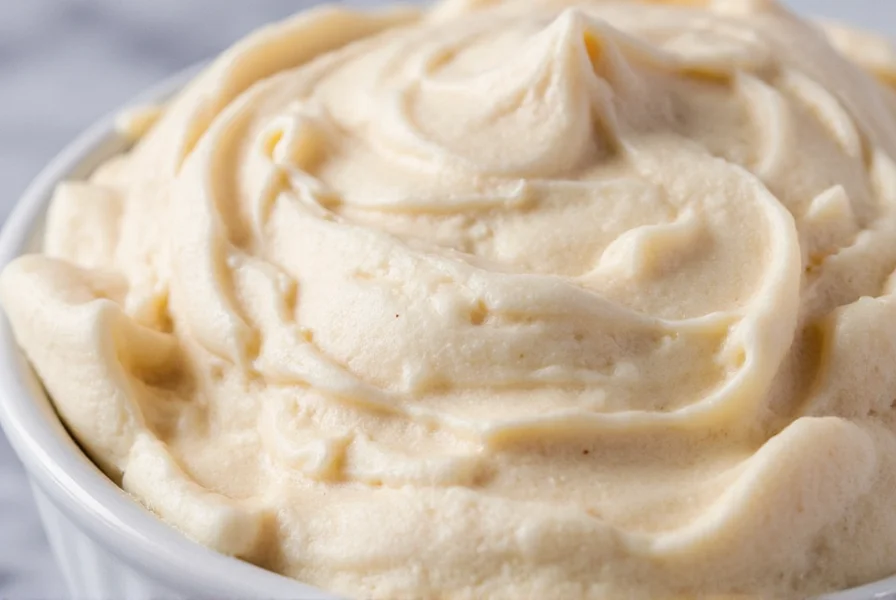When you pull freshly baked cinnamon buns from the oven, the right frosting transforms them from good to extraordinary. Many home bakers struggle with frosting that's either too runny, overly sweet, or fails to adhere properly to warm pastries. Understanding the science behind successful cinnamon bun icing can make all the difference in your baking results.
Understanding Frosting Types for Cinnamon Buns
Cinnamon buns require a frosting that can handle the heat of freshly baked pastries while maintaining its structure. Unlike cake frosting that sets firm, cinnamon bun icing needs to be slightly more fluid to spread evenly across the warm surface.
| Frosting Type | Best For | Consistency Tip |
|---|---|---|
| Cream Cheese | Rich flavor balance | Use room temperature ingredients for smooth texture |
| Vanilla Glaze | Traditional approach | Adjust milk quantity for perfect drizzle consistency |
| Brown Sugar Icing | Deep caramel notes | Add a pinch of salt to balance sweetness |
Cream Cheese Frosting: The Ideal Choice
Professional bakers consistently recommend cream cheese frosting as the best cinnamon bun topping. The slight tang cuts through the sweetness of the pastry, creating a more complex flavor profile that doesn't overwhelm the delicate cinnamon notes.
Perfect Cream Cheese Frosting Recipe
This tested recipe yields enough frosting for 12 standard cinnamon buns with ideal consistency that clings to warm pastries:
- 4 ounces (113g) full-fat cream cheese, room temperature
- ¼ cup (57g) unsalted butter, room temperature
- 1 cup (120g) powdered sugar, sifted
- ½ teaspoon pure vanilla extract
- Pinch of salt
- 1-2 tablespoons milk or cream
Step-by-Step Preparation
- Beat cream cheese and butter together until completely smooth and no lumps remain
- Gradually add sifted powdered sugar while mixing on low speed
- Incorporate vanilla extract and salt
- Add milk one tablespoon at a time until reaching desired consistency
- Mix for additional 30 seconds to ensure proper aeration
The ideal consistency should be thick enough to hold its shape but fluid enough to slowly spread across warm cinnamon buns. If your frosting becomes too thin, add more powdered sugar; if too thick, incorporate additional milk sparingly.
Frosting Application Techniques
How you apply frosting matters as much as the recipe itself. For professional results:
- Wait 2-3 minutes after removing buns from oven before frosting
- Use a piping bag for controlled application or a spoon for rustic presentation
- Start from center and work outward in circular motion
- Avoid over-frosting which can make buns soggy
Temperature is critical—frosting applied to excessively hot buns will melt completely, while applying to cooled buns results in poor adhesion. The ideal pastry temperature is between 120-140°F (49-60°C).
Troubleshooting Common Frosting Problems
Even experienced bakers encounter issues with cinnamon bun frosting. Here's how to solve the most frequent problems:
- Runny frosting: Chill ingredients before mixing or add additional powdered sugar
- Grainy texture: Ensure powdered sugar is sifted and ingredients are at proper temperature
- Too sweet: Increase cream cheese ratio or add a pinch of salt
- Doesn't adhere: Apply to slightly warm (not hot) buns
- Separates: Avoid overmixing after adding liquid ingredients
Storage and Serving Recommendations
Frosted cinnamon buns are best enjoyed the same day. For optimal freshness:
- Store at room temperature for up to 24 hours
- Cover loosely with plastic wrap to prevent drying
- Refrigerate only if necessary (up to 3 days)
- Bring to room temperature before serving refrigerated buns
For the best experience, serve frosted cinnamon buns within 2 hours of preparation when the icing has set but remains slightly soft.

Advanced Frosting Variations
Once you've mastered the basic cream cheese frosting, consider these professional variations:
- Lemon-Infused: Add 1 teaspoon lemon zest for bright contrast
- Bourbon Caramel: Swirl in 2 tablespoons of quality caramel sauce
- Maple Cream: Substitute 1 tablespoon milk with pure maple syrup
- Spiced: Incorporate ¼ teaspoon cinnamon or cardamom
When modifying recipes, change only one element at a time to understand its impact on the final product. Professional bakers recommend keeping detailed notes of any adjustments for consistent results.
FAQ
Can I make cinnamon bun frosting ahead of time?
Yes, you can prepare cream cheese frosting up to 24 hours in advance. Store in an airtight container in the refrigerator, then bring to room temperature and re-whip for 30 seconds before using. This allows flavors to meld while maintaining proper consistency for application.
Why does my frosting melt immediately on warm buns?
Frosting melts when buns are too hot (above 150°F/65°C). Allow buns to cool for 2-3 minutes after baking before applying. The ideal temperature range is 120-140°F (49-60°C), which lets the frosting set slightly while still absorbing some warmth from the pastry.
What's the difference between frosting and glaze for cinnamon buns?
Frosting contains more fat (butter/cream cheese) and powdered sugar, creating a thicker, creamier texture that holds its shape. Glaze has higher liquid content (milk, juice, or water) with less fat, resulting in a thinner consistency that soaks slightly into the pastry. Cream cheese frosting generally provides better flavor balance for cinnamon buns.
How can I make dairy-free cinnamon bun frosting?
For dairy-free frosting, substitute cream cheese with vegan cream cheese alternative and use plant-based butter. Add 1-2 tablespoons of coconut cream for richness. The powdered sugar quantity remains the same, but you may need slightly more liquid to achieve proper consistency due to different fat content in dairy alternatives.











 浙公网安备
33010002000092号
浙公网安备
33010002000092号 浙B2-20120091-4
浙B2-20120091-4